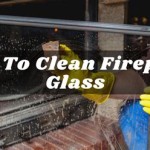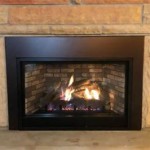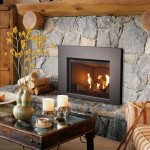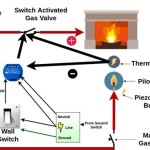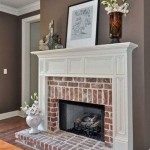Tempered Glass Fireplace Surround: A Modern Approach to Hearth Design
The fireplace has long served as a focal point in homes, providing warmth, ambiance, and a gathering place for families. While traditional materials like brick and stone have been staples in fireplace design for centuries, modern aesthetics increasingly lean towards sleek, minimalist, and visually striking elements. Tempered glass fireplace surrounds have emerged as a popular choice for homeowners and designers seeking to achieve these goals. This article explores the properties, benefits, design considerations, and installation aspects of tempered glass fireplace surrounds, providing a comprehensive overview of this contemporary design option.
Tempered glass, also known as safety glass, is a type of glass that has been processed by controlled thermal or chemical treatments to increase its strength compared with normal glass. The tempering process creates balanced internal stresses which cause the glass, when broken, to crumble into small granular chunks instead of splintering into jagged shards. This characteristic significantly reduces the risk of injury, making tempered glass an essential safety component in various applications, including automotive windows, shower doors, and, as this article explores, fireplace surrounds.
The use of tempered glass in fireplace surrounds offers a unique combination of aesthetic appeal, safety, and functional benefits. Its transparency allows for unobstructed views of the flames, enhancing the visual impact of the fire. The material's inherent durability allows it to withstand the heat generated by a fireplace. Further, its smooth, non-porous surface simplifies cleaning and maintenance. When considering a tempered glass fireplace surround, it is paramount to understand its specifications, installation requirements, and design possibilities.
Enhanced Aesthetics and Visual Impact
One of the primary reasons homeowners opt for tempered glass fireplace surrounds is the modern, sophisticated aesthetic they bring to a space. Unlike traditional, opaque materials, tempered glass allows for an unobstructed view of the fire. This transparency creates a visual experience that enhances the warmth and ambiance of the fireplace, allowing the flames to become the central design element. The clean lines and minimalist profile of tempered glass complements a variety of interior design styles, from contemporary and minimalist to transitional and even some modern farmhouse designs. The material's versatility allows it to integrate seamlessly into diverse architectural settings.
Moreover, the reflective properties of glass can amplify the light and warmth emanating from the fireplace, making the room feel brighter and more inviting. This effect is particularly beneficial in smaller spaces or rooms with limited natural light. The glass can also reflect other design elements in the room, creating a sense of spaciousness and visual interest. The ability to customize the size, shape, and thickness of the glass further enhances its design flexibility. Designers can create bespoke surrounds that are tailored to the specific dimensions and style of the fireplace and the surrounding space.
Different types of tempered glass can also be used to further enhance the aesthetic appeal. For example, low-iron glass offers exceptional clarity, allowing for an even more unobstructed view of the flames. Tinted glass can add a subtle color to the surround, complementing the overall color scheme of the room. Sandblasted or etched glass can create a textured surface that adds visual interest and provides a degree of privacy. The selection of the appropriate type of glass is essential to achieving the desired aesthetic effect.
Safety and Heat Resistance
The safety characteristics of tempered glass are paramount, especially considering the potential heat exposure from a fireplace. The tempering process significantly increases the glass's resistance to thermal shock, meaning it is less likely to crack or shatter when exposed to rapid temperature changes. While standard glass can easily break under the thermal stress from a burning fire, tempered glass is specifically designed to withstand these conditions. This heat resistance makes it a safe and reliable material for fireplace surrounds.
In the event that tempered glass does break, it shatters into small, granular pieces that are far less likely to cause serious injury compared to the sharp, jagged shards produced by standard glass. This inherent safety feature is particularly important in homes with children or pets, where the risk of accidental impact is higher. The selection of tempered glass for a fireplace surround mitigates potential hazards associated with breakage and ensures a safer environment for occupants.
The thickness of the tempered glass also plays a role in its heat resistance and structural integrity. Thicker glass is generally more resistant to thermal stress and impact damage. It is crucial to consult with a qualified glass professional to determine the appropriate thickness for the specific fireplace application, taking into account the size of the surround, the proximity to the flames, and the overall design considerations. Adhering to recommended thickness guidelines ensures the safety and longevity of the tempered glass fireplace surround.
Installation Considerations and Best Practices
Proper installation is crucial for the safety, functionality, and aesthetic appeal of a tempered glass fireplace surround. It's always suggested to hire a qualified professional with experience installing glass features. Several factors must be taken into account during the installation process, including the structural integrity of the surrounding walls, the ventilation of the fireplace, and the proper securing of the glass panels. Failure to address these factors can compromise the safety and performance of the fireplace surround.
Before installation, it is essential to inspect the tempered glass panels for any signs of damage, such as chips, cracks, or scratches. Damaged glass should never be installed, as it can compromise its structural integrity and safety. The surrounding walls should also be inspected to ensure they are level, plumb, and capable of supporting the weight of the glass. Any necessary repairs or modifications should be completed before proceeding with the installation.
The method of securing the tempered glass panels to the wall or fireplace structure is critical. Various options are available, including using metal brackets, clips, or adhesives specifically designed for glass. The chosen method should be appropriate for the weight and size of the glass panels and should provide a secure and stable attachment. It is imperative to follow the manufacturer's instructions carefully and to use appropriate safety precautions during the installation process. After installation, the glass panels should be thoroughly cleaned and inspected to ensure they are properly aligned and securely fastened.
Furthermore, it is crucial to ensure that the fireplace meets all applicable building codes and safety regulations. Proper ventilation is essential to prevent the buildup of carbon monoxide, and the fireplace should be inspected annually by a qualified professional to ensure it is functioning safely and efficiently. These measures contribute to the overall safety and well-being of the occupants and ensure the long-term performance of the fireplace and the tempered glass surround.
The design of a tempered glass fireplace surround can be customized to suit individual preferences and architectural styles. Some common design options include frameless designs, where the glass panels are attached directly to the wall, and framed designs, where the glass is encased in a metal or wood frame. The choice between a frameless and framed design depends on the desired aesthetic and the structural requirements of the installation. Frameless designs offer a clean, minimalist look, while framed designs can add a touch of elegance and sophistication. The frame can be customized to match the color and style of the surrounding walls and furniture.
In conclusion, a tempered glass fireplace surround offers a modern, safe, and visually appealing alternative to traditional fireplace materials. Its transparency allows for unobstructed views of the fire, enhancing the ambiance of the room, while its inherent durability and safety characteristics provide peace of mind. Proper installation and adherence to safety regulations are crucial for ensuring the long-term performance and safety of the fireplace surround. By carefully considering the design options, installation requirements, and safety considerations, homeowners can create a stunning and functional fireplace that will be enjoyed for years to come.

Ledge Glass Fireplace Screen Reviews Cb2

Barton Fireplace Screen Guard Panel Spark Tempered Glass Fence Stand 46 X 33 Com

7 Most Popular Glass Fireplace Screens For 2024 The Jerum Post

Barton Fireplace Screen Guard Panel Spark Tempered Glass Fence Stand 46 X 33 Com

This Glass Fire Screen Features Patterned Panels For An Updated Elegant Look The Two Door Fireplace Screens With Doors

Fireplace Glass Doors Vs Screens Full Service Chimney

Fireplace Glass Doors Vs Screens Full Service Chimney

Custom Modern Fire Screen In Polished Brass And Tempered Glass High Style Deco

Barton 36 X 26 Fireplace Screen Panel Guard Tempered Glass Fence Stand Clear Gold Target

Barton 47 3 4 In W Panel Tempered Glass Fireplace Fence Screen Flame Guard With Side Handles 95142 H1 The Home Depot
Related Posts

